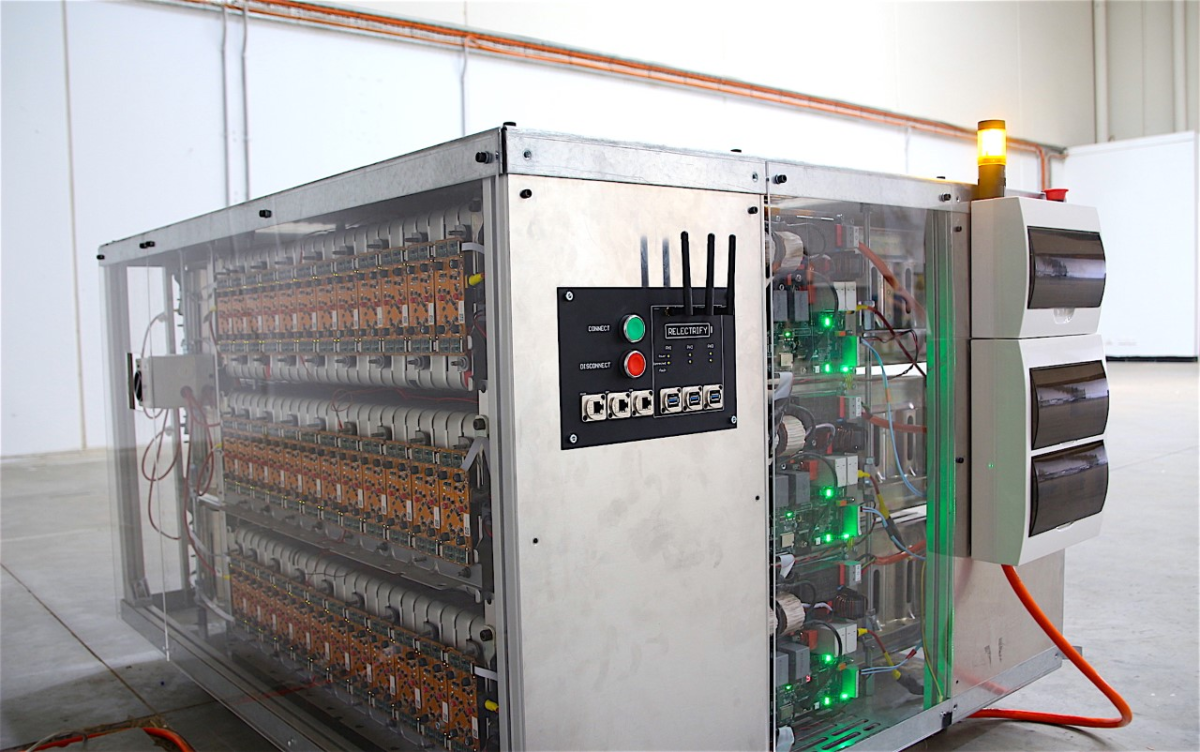While only in prototype stages, all-in-one batteries could be on the horizon for Australian consumers. A homegrown project has resulted in a prototype system that holds the promise of simplifying battery systems for installers.
The battery management system (BMS)-Inverter hybrid project, completed in March 2020, was led by Relectrify. It combined two central components in battery storage systems – the BMS and inverter into a single solution. This hybrid system leads to lower system costs and increased lifespan.
In the project, a single set of electronics was created that unified the function of both a BMS and a battery inverter. The BMS-Inverter hybrid uses sophisticated electronics that can be connected to battery cells and immediately make these AC ready, without the needing of an inverter. This means for new and second-life battery storage systems, there is substantial cost and performance benefits.
Relectrify has successfully demonstrated both single-and three-phase prototype BMS+Inverter systems using second-life Nissan Leaf battery modules, in solutions rated up to 60 kWh / 20kW.
Preliminary testing demonstrated a round-cycle combined second-life battery and inverter efficiency in line with market-leading new battery products. Harmonics testing achieved power quality levels suitable for grid compliance. Relectrify also received notable customer interest in the BMS+Inverter and has secured follow-on demonstration projects both at home and abroad. The Melbourne-based company is working with American Electric Power Co (AEP) and Nissan North America on a pilot project.
This hybrid system can also help deliver reliable electricity at peak times by reducing the pressure on the grid.
The BMS and inverter are important both in performance and efficiency but also in system reliability. In the ITP Battery Trial, Canberra-based ITP Renewables found that while it may be thought that the battery cells themselves are the most important sub-component for system reliability, the power electronics play a key role.
“There are a large number of factors which contribute to a high-performing, reliable battery storage system,” writes Susan Dedman, a project engineer, ITP Renewables in a forthcoming Opinion and Analysis column for pv magazine Australia. “Lithium cells are more vulnerable to damage when operated outside of design parameters, including under/over-voltage, over-current, under/over-temperature, etc. The BMS is responsible for monitoring the internal cells and protecting them from any of these conditions.
“This is not a trivial operation and more than one battery in the trial has experienced operational failure due to BMS problems.”
The combined BMS-inverter battery is only in its early stages of development. The project was funded by the Clean Energy Innovation Fund.
This content is protected by copyright and may not be reused. If you want to cooperate with us and would like to reuse some of our content, please contact: editors@pv-magazine.com.









1 comment
By submitting this form you agree to pv magazine using your data for the purposes of publishing your comment.
Your personal data will only be disclosed or otherwise transmitted to third parties for the purposes of spam filtering or if this is necessary for technical maintenance of the website. Any other transfer to third parties will not take place unless this is justified on the basis of applicable data protection regulations or if pv magazine is legally obliged to do so.
You may revoke this consent at any time with effect for the future, in which case your personal data will be deleted immediately. Otherwise, your data will be deleted if pv magazine has processed your request or the purpose of data storage is fulfilled.
Further information on data privacy can be found in our Data Protection Policy.